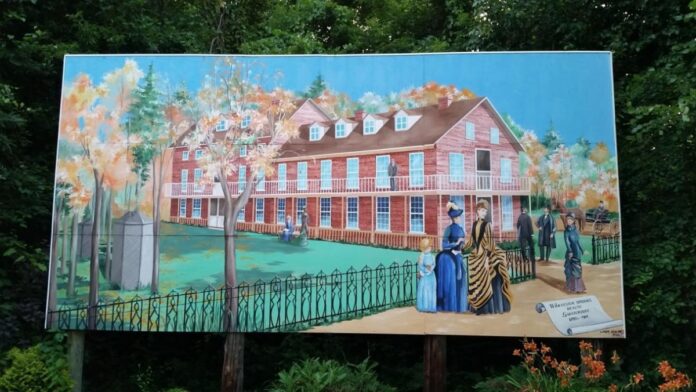The healthy and invigorating power of water, and especially thermal mineral water, has been known for centuries. The ancient Greeks and Romans, the Egyptians, cultures from all parts of the world, knew and enjoyed soaking in warm water springs. Roman baths sprang up (dreadful pun) wherever they settled and the mineral springs were especially valued for their restorative and healing powers. The famous city of Bath, in England, was named for that very thing.
It was the Romans who gave us the term we use for these places: the spa, from the Latin phrase “Sanus per Aquam”, health through water. These were places for social gatherings, family-friendly baths, without which no Roman settlement would be complete.
But the really popular spas were those with naturally occurring mineral springs, where the air was perfumed by the various minerals contained in the spring waters. By the Nineteenth Century, the medical establishment were convinced of the scientific basis for thermal springs and their effect on the human body and mind. Wherever these springs were found, entire towns grew up around them, if only for a few decades before the enthusiasm wore off. One of these settlements was Winchester Springs. The sulphur springs were first noticed when the Township of Winchester was being surveyed in the early years of the Nineteenth Century, but, apart from the survey notes, the existence of the springs went unremarked until Thomas Armstrong, who ran a lumber business, used them to help his team of men deal with the outbreaks of scurvy which they got through eating too much salted meat.
As news of the springs spread, the site became developed as a spa, and a village grew up around them. At its height, Winchester Springs boasted a fine school and three churches. In his book, “The Story of Dundas”, which was published in 1905, J. Smyth Carter described the springs when they were still attracting large numbers of visitors:
“This famous resort consists of two springs a few yards apart, one of which is more strongly impregnated with iron than the other… The water, to some, is not pleasant at first, but the exhilarating and general beneficial effects of the gas in the water are so apparent that after a few draughts it is taken with a relish, more particularly when it is found to stimulate the most precarious appetite.”
A large brick Sanatorium was built and opened in 1876, and the owner listed the minerals which gave the waters their curative properties “of very great strength and efficacy for many diseases: Sulphur, Iron, Iodine, Bromide, Potassa, Soda and Sulphide of Carbon Gas. These would aid in the “certain cure” of Rheumatism, Dyspepsia, Scrofula, Billious Derangements, Urinary Obstructions, Skin Diseases of all kinds, and General Debility”. It was promised that “Medical men will be in daily attendance during the season for the accommodation of those who may require their advice. The waters of these Springs are unsurpassed in all of North America, and from the wide reputation they now have, it will be needless to extol them further.” How could anyone resist such a place?
The coming of the railway in 1888 made Winchester Springs accessible from across the province and beyond, and the spa catered for those arriving at Morrisburg by train or river: “A daily stage will convey passengers to and from the boats and Railway Cars at Morrisburg”. The terms on which these miraculous waters could be enjoyed were “Board with use of water, $1.00 to $1.50 per day, according to time and location. Medical attendance and medicine extra”.
Murray Inch, in his paper, “Historical Glimpse of North Dundas Township”, described the activities that took place around the Sanatorium: “In addition to medical treatment which included drinking and bathing in the waters, guests would stroll the landscaped grounds; play tennis or croquet; attend concerts and participate in fancy balls. Business men could use the on-site telegraph office to keep track of business interests, while receiving treatment”.
Winchester Springs began to lose its main attraction in the early years of the Twentieth Century, as thermal springs began to lose their appeal. Following the traumatic events of two world wars and the Great Depression, there may have been a turning away from something that had marked an earlier and more innocent time. Other kinds of attractions competed with spas for tourists, and the Sanatorium at Winchester Springs became a hotel for a while, but eventually closed for good.
Today, the value of hydrotherapy has been rediscovered, and it has returned to the mainstream as a healthy and therapeutic part of a healthy regimen. Too late for Winchester Springs, perhaps, to take advantage and rediscover its past days of glory, when people came from all over to enjoy the warm and relaxing soak in its rather sulphur-perfumed waters.

